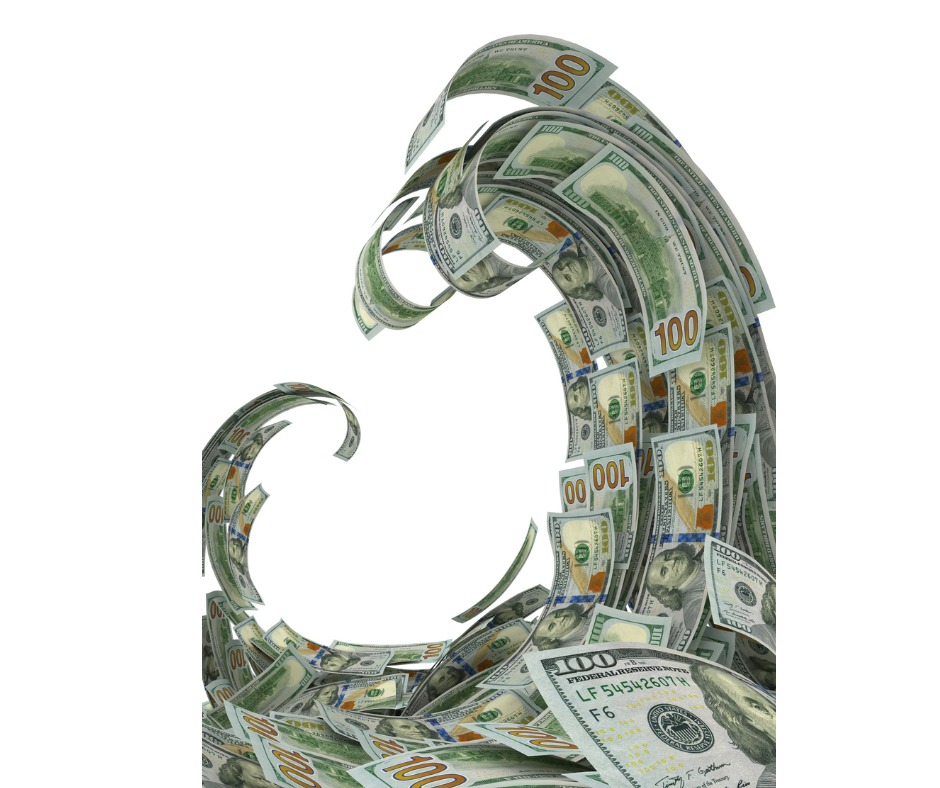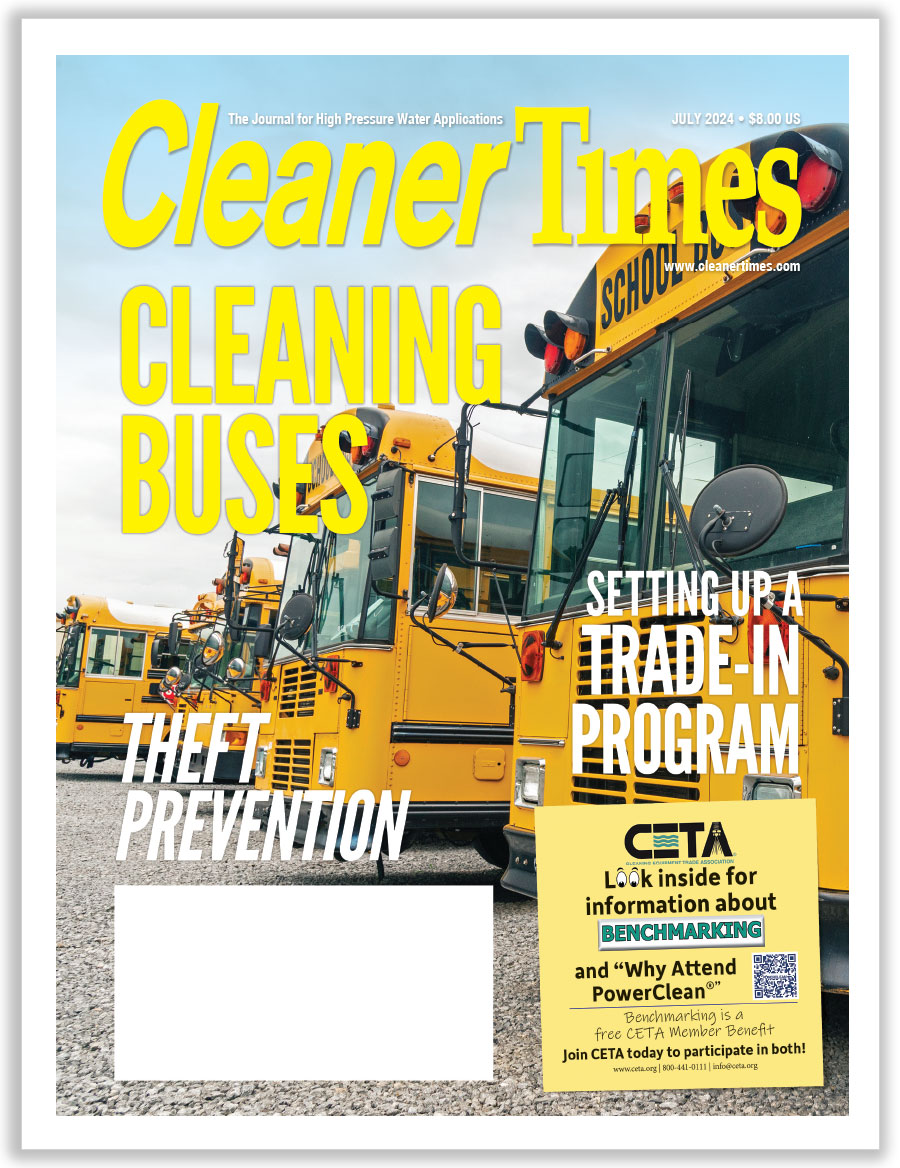
For Maximum Tax Savings, Repair or Improve?
By Mark E. Battersby / Published December 2023

The tax write-offs for what is or what isn’t a repair in a pressure cleaning business has long been an issue with the IRS. Although the tax rules are pretty cut and dry when it comes to expenditures for repairs, replacements, improvements, or routine maintenance, it is the actual definition of each activity that often causes the problem.
The tax rules allow a pressure washing contractor or pressure cleaning business or supply business to deduct all of the “ordinary and necessary” expenses incurred during the year, including the cost of repairs, maintenance, supplies, and the like. Another tax rule requires the costs of acquiring, producing, and improving equipment or other property, regardless of the amount of the cost, to be capitalized and written off over a period of years.
DEFINING THE DIFFERENCE
The IRS’s usual definition of a repair is an expenditure that keeps the property in normal operating condition. A capital improvement, on the other hand, is defined as an expense that either extends the useful life of the property or allows it to perform a new function.
When attempting to figure out the difference between immediately deductible repairs and those improvements that should be written off over a number of years, the general rule of thumb is as follows: an improvement is any work that prolongs the life of the operation’s equipment or property, enhances its use, or adapts it to a different use. A repair merely keeps that property or equipment in efficient operating condition. But then, there is routine maintenance.
ROUTINE MAINTENANCE
Although often extensive, expenditures for regularly scheduled, routine maintenance on property or equipment—including inspection, cleaning, testing, replacement of parts, and other recurring activities performed to keep that property or equipment in its ordinary efficient operating condition–don’t, according to the rules, need to be capitalized.
Of course, while routine maintenance can be performed at any time during the property or equipment’s useful life, there must be a reasonable expectation when the property is first placed in service that the maintenance activities will be performed one or more times during its useful life. Failure to actually perform the maintenance more than once is not fatal—provided the pressure washing operation’s owner or manager can substantiate that its expectation was reasonable when the property or equipment was first placed in service.
Factors to consider when determining whether the pressure cleaning operation’s expectation was reasonable include the recurring nature of the activity, practices within the industry, the manufacturer’s recommendations, and the operation’s own experience with similar or identical property or equipment.
BELABORING THE OBVIOUS
Quite simply, a pressure cleaning operation can take tax deductions for certain expenses in the same year they are made by labeling them as a “current expenses.” For other expenses, those so-called “capital expenses,” the business must break up the deduction and take a portion of the total cost over a number of years.
A capital improvement is a permanent structural alteration or repair to equipment or property that substantially improves it, thereby increasing its overall value. This can involve updating the property or equipment to suit new needs or extending its life. But, again, basic maintenance and repairs are not considered capital improvements.
A repair is essentially maintenance that brings the property or equipment back to working condition but doesn’t improve its condition beyond the quality or usefulness that existed before the work was done. Just to confuse things, it should be noted that according to the IRS several expenses that otherwise might be considered as currently deductible must be capitalized if part of a more extensive plan. While something as basic as painting wouldn’t usually be considered a capital improvement, it must be capitalized if it is part of a large-scale improvement plan. Painting one piece of equipment may be a repair, but the cost of painting all of the equipment should be capitalized.
Fortunately, the tax rules contain a relatively new de minimis safe harbor for expenditures that would ordinarily have to be capitalized. Instead of capitalizing and depreciating many of those expenditures, by taking advantage of bonus depreciation or the Section 179 election to expense, many costs that ordinarily must be capitalized can simply be expensed, thanks to any one of the tax law’s so-called “safe harbors.”
SAFE HARBORS
Safe harbors are “loopholes” built into the tax regulations for the treatment of specific expenditures. One such safe harbor, for example, allows purchases of either materials or supplies that cost less than $200 to be treated as expenses and currently tax deductible. The deduction for materials and supplies is available in the tax year when the item is used or consumed so long as it has a useful economic life of less than 12 months.
Also in the tax rules is a safe harbor for amounts paid to acquire or produce tangible property. The so-called “de minimis safe harbor” is available to operations that do not have an “applicable financial statement” and allows them to immediately expense expenditures of less than $2,500 per invoice.
For those operations that do have an “applicable financial statement” (generally an audited financial statement), the threshold is increased to $5,000 per invoice—regardless of whether the expenditure meets the definition of a capitalizable expense or not. Best of all, the de minimis safe harbor is available without the necessity of changing the operation’s accounting methods.
Although not strictly a safe harbor, as mentioned, the tax rules allow amounts paid for routine and recurring maintenance to keep property in working condition to be treated as repair costs. In order to use the “routine maintenance safe harbor,” the operation should segregate amounts paid for real estate and other property. If the expenditure is paid to maintain that real estate or other property, the amount can be expensed so long as it is expected that the repair will occur more than once during a ten-year period. If the amount is paid to maintain other property, the amount can be expensed so long as it is expected to occur more than once during the property’s useful life.
WHEN AN IMMEDIATE WRITE-OFF WON’T HELP
Immediate write-offs, whether labeled as repairs, maintenance, or accelerated depreciation, are not of much use to any business without taxable profits from which to deduct them. After all, very few businesses will actually benefit from more losses.
Capitalizing means treating the cost under the belief that benefits—and tax benefits—will be





